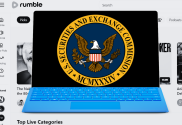You may think your internet usage is completely private, but any time you access a website, sign up for an account, purchase a product, post a message, or browse search engine results, you’re sharing something about yourself. If you find this troubling, you may want to learn more about how you can delete your internet footprints.
4 Tips for Erasing Yourself From the Web
While many people have known for years that companies – especially social media platforms – have collected and sold their data, the recent Cambridge Analytica-Facebook revelation brought it to the attention of the general public.
This “scandal” is just one example of some of the privacy risks that come with using the internet. Almost every major social network has been hacked in some form or fashion over the past few years and we haven’t even scratched the surface.
As someone who has dozens of online accounts, it’s imperative that you start taking control of your online presence. Erasing personal information and covering up internet footprints is challenging, but there are some practical steps you can take.
1. Search Yourself
The first step is to search yourself on Google. Begin by searching just your name. If you have a generic name, you may need to search your name plus other qualifying factors (such as the city you live in).
Not only will these searches open your eyes to just how much information is out there, but this process will also help you get the lay of the land. In other words, it tells you how much work you have to do.
2. Delete Your Social Media Accounts
The most important step is to delete your social media accounts. Profiles on sites like Facebook, Twitter, Instagram, and YouTube often have lots of information on you. The key is to delete, rather than deactivate.
“Facebook notably provides options for both deactivation and deletion,” Security Baron explains. “Deactivation keeps your account ready for a quick return to the site. Deletion instigates the process of wiping your stored data and prevents Facebook from accessing your information, as long as you don’t login for the two-week quick reactivation period.”
Sites like Twitter, LinkedIn, and Instagram have similar procedures, so make sure you read up on the process of actually deleting your data.
3. Contact Webmasters
If you run across information that’s been published about you online – such as in a news article or blog – you’ll need to contact the webmaster in charge of the website. In most cases, they’ll have to physically delete the content. You don’t have a whole lot of control.
4. Remove Yourself From Data Collection Sites
There are a multitude of companies on the internet that collect your information and sell it to advertisers and other interested parties. Some major ones include Spokeo, PeopleFinder, and Whitepages.com.
While it is possible to access each of these sites one by one and have your information removed, it’s a pretty cumbersome process. Every site has its own unique policy. Some require you to fax over physical paperwork, while others make you get on the phone.
“Anyway, an easier way to do it is to use a service like DeleteMe at Abine.com,” Eric Franklin writes for CNET. “For about $130 for a one-year membership, the service will jump through all those monotonous hoops for you. It’ll even check back every few months to make sure your name hasn’t been re-added to these sites.”
Putting It All Together
The troubling thing about the Cambridge Analytica-Facebook fiasco, recent data breaches, and the rise in cyber attacks is the fact that you, as an individual, have very little control over your data, internet behaviors, and personal information once you release control. There’s also reason to believe that we’re currently only experiencing the tip of the iceberg. And having said that, now’s a good time to really drill down and focus on how you can protect yourself moving forward.
It’s impossible to actually remove your entire history or presence from the internet, but you can definitely make some great strides in limiting the amount of information others can find and use – and it’s a worthwhile task.





